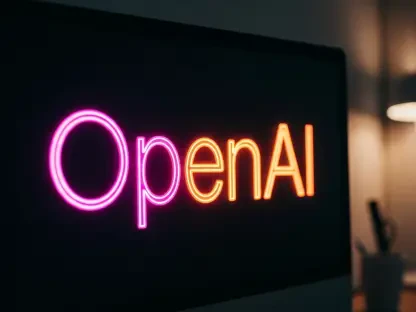I’m thrilled to sit down with Vijay Raina, our esteemed expert in enterprise SaaS technology and software design. With his deep knowledge of software architecture and thought leadership in the field, Vijay is the perfect person to help us unpack the incredible success of ChatGPT’s mobile app, which has generated a staggering $2 billion in global consumer spending since its launch in May 2023. In this conversation, we dive into the factors fueling this revenue boom, the app’s dominance over competitors, and what the future might hold for this AI powerhouse in the mobile space.
How did ChatGPT’s mobile app manage to hit $2 billion in consumer spending in such a short time since its launch?
Well, the rapid rise to $2 billion is a combination of timing, innovation, and market demand. When the app launched, it tapped into a growing curiosity about AI tools among everyday users. Its intuitive interface and powerful capabilities made it a go-to for both casual users and professionals. Plus, the freemium model with premium subscriptions encouraged spending by offering real value through advanced features. I think the cultural zeitgeist around AI also played a huge role—everyone wanted to try the latest tech, and ChatGPT became synonymous with conversational AI.
What do you believe are the key drivers behind the app’s revenue jumping 673% to $1.35 billion in 2025 alone?
This massive growth in 2025 likely comes down to a few critical factors. First, the app has probably seen significant updates—think enhanced features or better integration with other tools—that keep users hooked. Second, word-of-mouth and viral adoption have snowballed, especially as more people rely on AI for work and personal tasks. I’d also wager that targeted marketing campaigns and possibly strategic partnerships have expanded its reach, convincing more users to upgrade to paid plans.
With an average of $193 million in monthly revenue, how sustainable do you see this level of income over the long haul?
Sustaining $193 million a month is ambitious but doable if the app continues to innovate. The AI space is evolving fast, so staying ahead with cutting-edge features and user engagement will be key. However, challenges like market saturation or emerging competitors could put pressure on this figure. I believe focusing on user retention through personalized experiences and maintaining trust around data privacy will be crucial to keeping this revenue stream steady.
ChatGPT’s revenue dwarfs competitors like Grok by 53 times. What makes it stand out so much in the mobile AI market?
ChatGPT’s dominance comes from its first-mover advantage and brand recognition. It was one of the first to make conversational AI accessible on mobile in a user-friendly way, which built a loyal user base early on. Its app likely offers a more polished experience compared to others, with features tailored to mobile users’ needs. Competitors are playing catch-up, and while they might close the gap eventually, ChatGPT’s ecosystem and constant updates give it a strong edge for now.
In the U.S., spending per download is $10, much higher than the global average of $2.91. What’s driving this trend in the American market?
I think U.S. users are more accustomed to paying for digital services, especially subscriptions, compared to other regions where free alternatives might be preferred. There’s also a higher concentration of professionals in the U.S. who use ChatGPT for productivity, making them more willing to shell out for premium features. Cultural factors and disposable income play a part too—Americans often see value in investing in tools that save time or boost efficiency.
What is your forecast for ChatGPT’s trajectory in the mobile app space over the next few years?
Looking ahead, I expect ChatGPT to maintain its lead, but the competition will intensify as other players refine their offerings. If it keeps innovating—perhaps by integrating more deeply with other apps or focusing on niche markets—it could solidify its position. However, regulatory scrutiny around AI and user privacy could pose hurdles. I’m optimistic, though; the app’s adaptability and strong user base suggest it’ll continue to thrive, potentially crossing even bigger revenue milestones.









